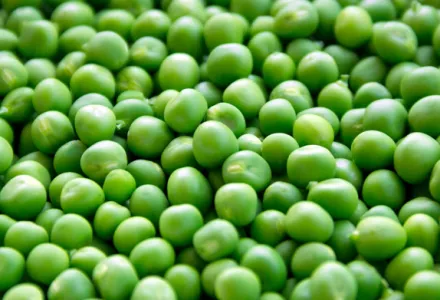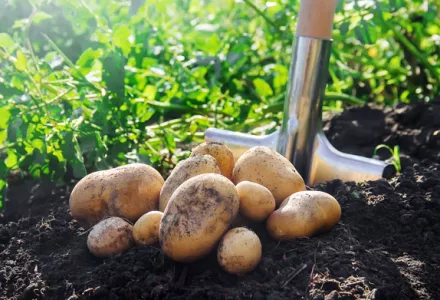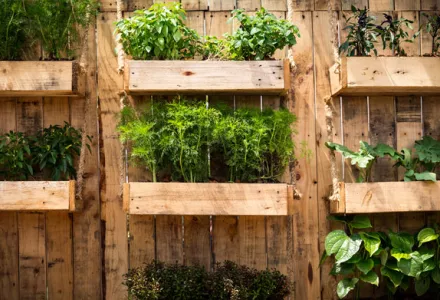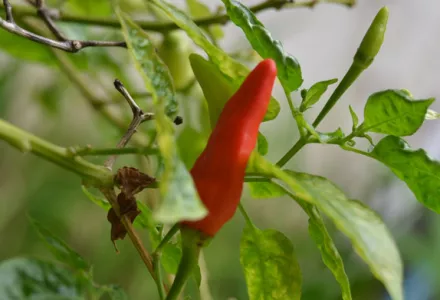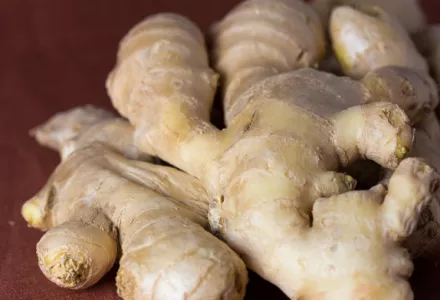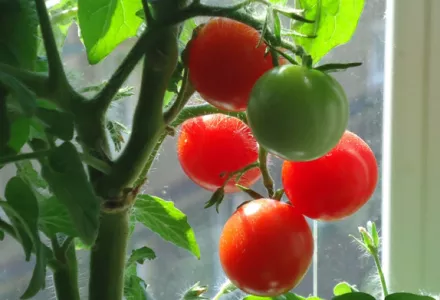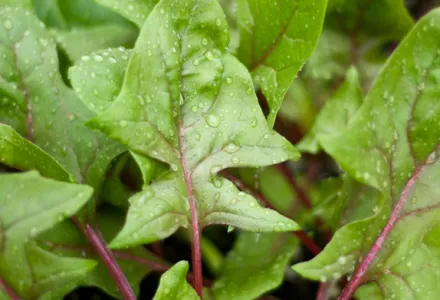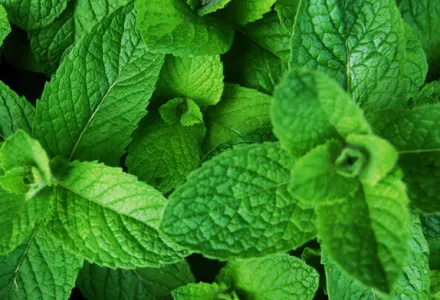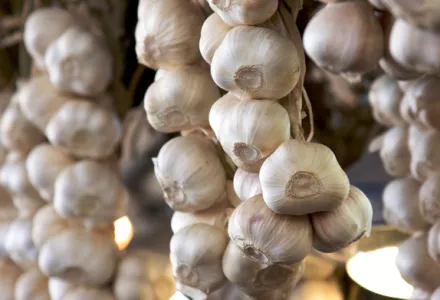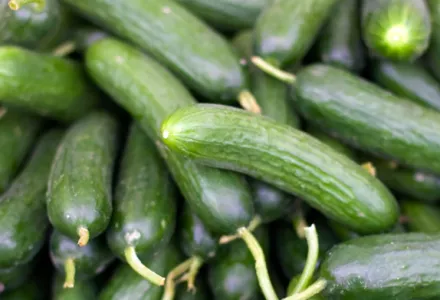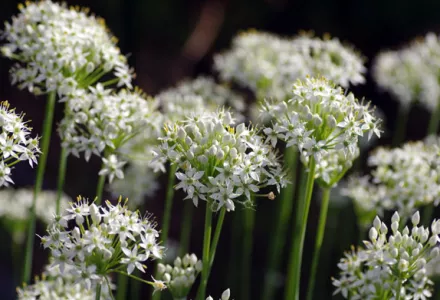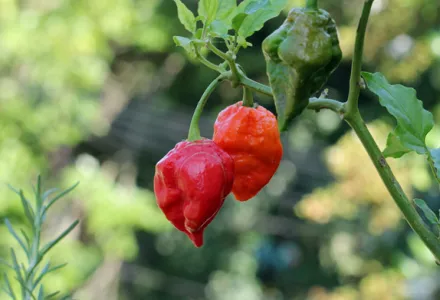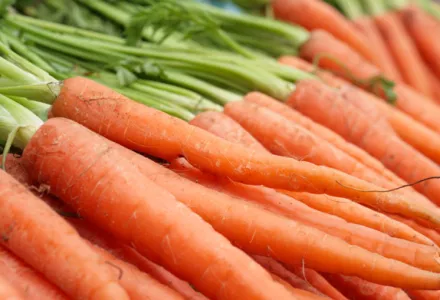Without a doubt one of the spookiest foods going round, the pumpkin has become a firm favourite across the world—this easy-to-grow plant and its delicious flesh, skin, seeds, flowers, and leaves can transform into an enormous variety of sweet or savoury delights. The first pumpkins, which originated in North America over 10,000 years ago, were not so yummy, however, and were originally small, bitter, hard and more likely to be used as bowls or matting than food.
The word 'pumpkin' is thought to derive from the ancient Greek word pepon (meaning melon), which then became the Latin peponem, the French pompon and the English pompion. It transformed into the modern day 'pumpkin' when 17th-century English colonists were introduced to the food by Indigenous Americans in the north-eastern US. There is also an Indigenous Wampanoag word pôhpukun, which may have been used to help form the English word, while 'squash' is derived from locally Indigenous words such as askꝏtasquash and askútasquash.
Pumpkins are famously associated with Halloween and been used to make jack-o-lanterns for centuries, but the original lanterns were more likely carved from turnips, beets or potatoes. The custom of frightening away 'Stingy Jack' with scary-faced lights placed in windows comes from Ireland, Scotland and England, where these root veggies were much more common. It wasn't until immigrants took the tradition to the American colonies that it was discovered that pumpkins made perfect lanterns for deterring evil spirits.
Family ties
A member of the gourd family, there's not much scientific agreement as to what makes a pumpkin different from a squash, and in Australia 'pumpkin' is a catch-all term that refers both to Butternuts (which are better known as squashes in the UK and US), as well as our other popular varieties, such as Jap and Queensland Blue.
Close pumpkin relatives include zucchini, cucumbers, watermelons, cantaloupe and honeydew melons.
Eat me
Pumpkins are incredibly delicious and versatile—and can be enjoyed in sweet or savoury recipes. The roasted seeds make a yummy snack (see the recipe below); the flowers, stuffed with cheese and spices and fried in a delicate batter, make for a delectable treat; the leaves can make for nutty stews and side dishes; and the flesh is a famous soup ingredient, star of a classic American pie, a handy addition to any curry and a must-have roast veggie.
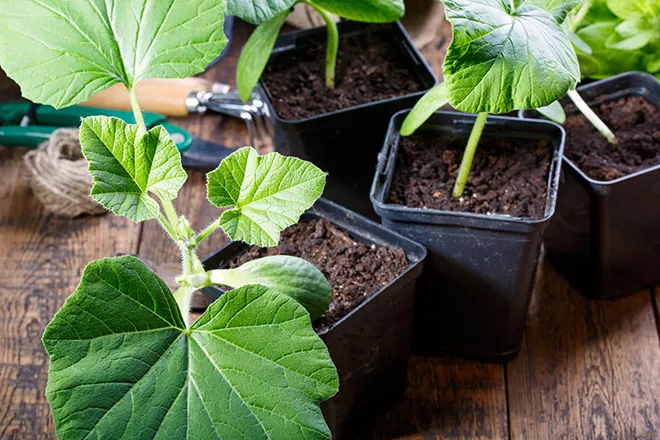
Grow me
In Australia, pumpkins can be grown year-round in warmer areas, and after the last frost in chillier zones. Sow seeds directly into the garden, in mounded heaps of well-composted, well-drained and well-mulched soil. Pop 4-5 seeds into each mound and space the mounds a couple of metres apart (seedlings can also be transplanted successfully).
Pumpkin vines take up a LOT of space, and don't like being stepped on, so make sure you plant them somewhere out of the way where they can spread out, such as the compost heap, or think about training the vines up the side of a wall.
Regular watering is important to stop pumpkins splitting, and to protect shallow roots in hot weather—but don't drown them! Stick your finger in the mound and if it comes out moist and dirty, there's no need to add more water. It's also a good idea to water in the morning, to prevent powdery mildew and other fungal problems from forming.
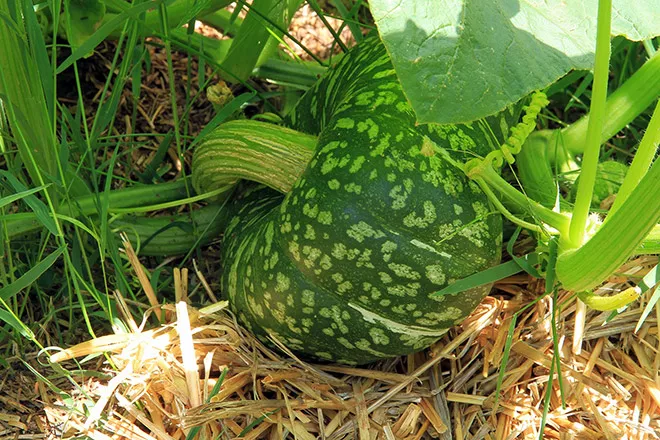
Feed me
If you have planted your pumpkins in good compost with plenty of well-rotted manure you may not need to feed them much at all, however, applying a little fertiliser in moderation at the right times can really boost your harvest. Early in the growing season, a nitrogen-heavy fertiliser will make the vines and leaves explode with green abundance, while phosphorus-heavy food will make for plentiful flowers during the blossoming phase. When the fruit starts to appear, an application of potassium-rich fertiliser will make for healthy and delicious pumpkins.
Growing tips
- Give pollination a helping hand! During the flowering stage, pick the male flowers (the ones with no bump at the base), and rub the pollen on the inside of the female flowers to help ensure a bountiful harvest.
- Get to know the three sisters. Native Americans often grew corn, beans and pumpkins together and this companion planting system also works well in the modern garden. The corn stalk acts as a trellis for the bean vines and the beans put nitrogen in the soil for the corn. In turn, the pumpkin vines shade the soil, helping keep moisture in the ground and protect shallow roots.
- Once the pumpkins start appearing, keep them off the ground with boards to prevent wet soil rotting the young fruit.
- Don't grow pumpkins with tomatoes or potatoes! it's also a good idea to leave some time between growing pumpkins and their relatives in the same area—so try not to put cucumbers, melons, and zucchinis in the same spot in subsequent years.
- Pumpkins can be prey to powdery mildew and similar diseases. Removing affected leaves, encouraging air circulation through pruning and avoiding wetting leaves when watering can all help prevent these funguses from spreading.
- When it comes time to harvest, test your pumpkin's ripeness by knocking on it. If it sounds hollow and the skin is hard, it's ready! Make sure to leave at least 5cm of stalk on top to aid storage.
- Give your pumpkins a long shelf life through proper curing. Let the harvested fruit sit out in the sun for a week or so, and then store in a cool, dry, dark place until you're ready to eat them.
Cure what ails ya'
Pumpkin is a very healthy food, providing a great energy boost, an excellent source of beta-carotene (an antioxidant that is good for neutralising cell-damaging free radicals) and plenty of vitamin A and C. Pumpkins also contain other antioxidants that are thought to assist eye health and prevent the formation of cataracts, as well as nutrients such as iron, zinc, potassium and fibre—vital for healthy blood, bones and bowels.
RECIPE
Roasted pumpkin seeds
Ingredients
- Whole pumpkin
- Salt
- Extra virgin olive oil
- Spice powders such as cumin, paprika, or chili (optional)
Method
- Cut pumpkin, scrape out seeds, and rinse in colander to separate seeds from fibrous flesh
- Boil pumpkin seeds in salted water for 10 minutes then remove from heat and drain. This step will help get the saltiness inside the seeds themselves. One tablespoon of salt should be used for every half cup of seeds.
- Coat the seeds in olive oil (and spices, if using) and spread them in a single layer on a baking tray.
- Roast seeds in a 200°C oven for between 5-20 minutes, or until lightly browned (cooking time will depend on the size of the seeds)
- Allow seeds to cool on a cooling rack before eating or storing

